2012 Sea-Doo RXP-X 260 Review
Sea-Doo successfully retools iconic musclecraft
Two-seater musclecraft fans rejoice. After focusing on the recreational market in 2011, Sea-Doo has turned its attention back to the solo-oriented musclebound ranks, introducing a completely new craft that very much carries on the legacy of the iconic RXP-X, while at the same time charting new territory in terms of just how aggressively a PWC can handle.
Is Sea-Doo’s latest and greatest worthy of musclecraft glory? Read on…but I’ll tell you right now the answer is an enthusiastic “YES.”
Shark In The Water
Get the Flash Player to see this player. |
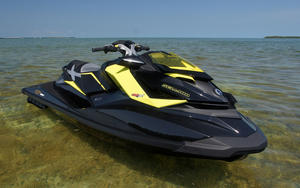 The angular 2012 Sea-Doo RXP-X 260 certainly looks the part of a musclecraft.
The angular 2012 Sea-Doo RXP-X 260 certainly looks the part of a musclecraft.Sea-Doo’s codename for the RXP-X project was “shark,” and that fish’s influence can be seen in the craft’s distinct profile. It’s reminiscent of the GTI introduced last season, with a “flowing facet” design that mixes in seemingly random, abrupt angles in a flowing, bow-to-stern fashion. It’s undoubtedly muscular, primarily black in color with day-glow yellow accents providing stark contrast. Two analog gauges flank a digital gauge at center, and are accented with an amber tone. A new boost feature tracks the status of the supercharger in real time. The previous RXP-X’s billet handlebar system completes the racy, one-off look, as does a translucent yellow panel atop the cowl.
For all the muscular attitude the boat projects above the bondline, below it is where the “magic” happens. Sea-Doo reps stated they wanted to set new standards in regards to performance handling, and they accomplished much of that goal with a radically new hull design. Featuring a multi-stage running surface, it’s dubbed T3, a sleek moniker for the more clunky sounding “tight turning t-shape.” That T is apparent when viewed from the stern. A center running pad is dropped and lowered from the outside of the boat in a shape much like that consonant, allowing the craft to essentially run on a reduced running surface when at speed. The stem line is very aggressive, while rounded chines allow the boat to roll into turns with a very pronounced lean-in style, and suck it to the surface once that turn is initiated.
Enhancing the handling further are new sponsons, which feature an innovative winglet, similar to that often found on a slalom waterski fin. They’re designed to help initiate a turn, as well as prevent chine walk in a corner. A standard vertical sponson’s effect is reduced the further the boat is rolled over on its edge. The 90-degree winglet provides missing traction in this attitude. Sponsons are user-adjustable with a simple Allen wrench; keep them in the middle position for the best all-around ride, raise them one notch to produce a looser feel, or lower them to the bottom setting for the most aggressive handling.
Rounding out the list of prominent hull features are stock trim tabs, which provide lateral stability while keeping the bow down in rougher conditions. They also provide some degree of straight-line stability, and help the hull achieve its best top-end speed. Anti-dive and anti-splash chines are featured at the front of the hull to prevent the bow from dipping during deceleration and braking, as well as provide some splash deflection.
Introducing Ergolock
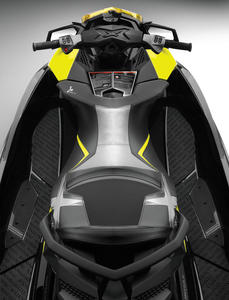 A pronounced hourglass shape in the seat, along with canted footrests and adjustable handlebars create the “Ergolock” system.
A pronounced hourglass shape in the seat, along with canted footrests and adjustable handlebars create the “Ergolock” system.The hull is undoubtedly cool, but it’s also just one half of the equation. Sea-Doo designers and engineers spent equal time evaluating just how a driver controls the craft. The conclusion? Most modern PWC are very flat-turning vehicles, requiring the driver to leverage the outside foot to produce the best hook-up. Wide saddles also limit a rider’s ability to use their legs, and instead force a driver to use their upper body strength to stay on the craft in the tightest of turns.
Sea-Doo’s solution to the problem is complex, yet at the same time surprisingly simple — re-imagine the watercraft’s seat. Rather than wide and relatively straight, the saddle has a dramatic hourglass design, surprisingly slim in the middle and featuring padded bolsters at the front that extend up and back over the driver’s knees. It positions the driver farther forward on the craft, and provides a feel much like a street bike. Canted footrests are positioned in the footwells adjacent to that seat’s indentation, and the previous generation RXP-X’s Adjustable Ergonomic Steering (A.E.S.) handlebars allow fine tuning of the position through width and handlegrip rotation. Together, these three components are known as the “Ergolock” system, a fitting handle seeing as they literally help “lock” the rider into position.
The idea is to allow a rider to literally grab the seat with his or her knees, while exerting additional pressure by bracing their feet against the footrests. This allows the stronger muscles in the legs to do the majority of the work, while taking the strain off the upper body. Of course, the lean-in style also does some of the workload, naturally counteracting the centrifugal force felt in a turn.
Ride Impression
It may take a few minutes to get used to, but the Ergolock system works. Rather than force my legs wide into an uncomfortable position that limited my leg’s ability to grip the saddle (and consequently forced me to take the brunt of the craft’s turning force through my arms), it allowed me to ride comfortably and grip the saddle with the strongest muscles at my disposal — those in my legs. Jam the inside knee into the bolstered support, wedge both feet against the canted footrests, and you can literally carve what I’d argue are the tightest turns ever possible on a production personal watercraft. It’s amazingly fun, a feeling that I’d liken to the Yamaha WaveBlaster or third-generation Sea-Doo XP. On Sea-Doo’s appropriately “t-shaped” buoy course, I was able to crank complete 180-degree turns with jaw-dropping speed and precision.
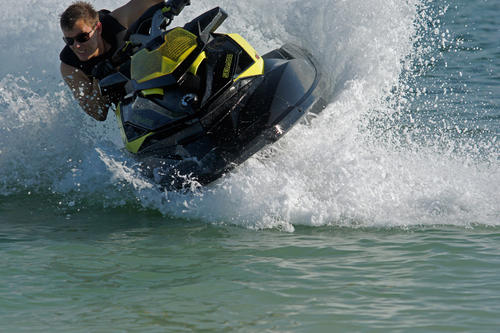 You can carve tighter turns on the new RXP-X than on any other stock PWC in the history of the sport
You can carve tighter turns on the new RXP-X than on any other stock PWC in the history of the sportAs to the RXP-X’s classic speed and performance feel, it’s still very much there. With the same 1.5-liter, supercharged with intercooler 4-TEC engine, I recorded a 67.1 mph top speed in less than ideal position (read, I was holding a GPS in one hand while throttling with the other in a very un-aerodynamic stance). I didn’t have access to acceleration testing software for the hardcore 0-30mph numbers, but informal tests using a GPS indicate the 0-30 mph acceleration times should be in the neighborhood of two seconds. Rough-water handling is arguably better than the boat’s predecessor; it knifes through waves with more confidence, as well as holds a more predictable line.
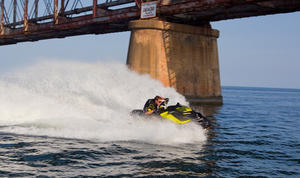
Yes, there are tradeoffs. The seat’s ergonomics seem best fitted to the “average”-sized rider. Taller riders may find their feet forced further back in the tray than desired to fit the saddle’s contours at the knees. And that T-shaped hull can produce a few handling quirks on occasion. When abruptly backing off the throttle, I found the hull could roll slightly to one side, assuming a list that took a little adjustment to right. The same characteristic can be noted when gently accelerating in a turn. Neither quirk resulted in any loss of stability, but it’s noticeable.
In the overall scheme of things, however, those are tradeoffs that I’m happy to make given the craft’s incredible handling prowess. This is a worthy remake of an iconic Sea-Doo musclecraft…and one that I’m anxious to ride again.
One Last Thing…
Oh, yeah, before I forget, it’s got the infamous Sea-Doo brakes, which provide not only stopping power but also give the craft some precise handling around the dock or launch ramp. It’s also got electronic throttle, meaning you get a tamer Touring mode for general riding or the more aggressive Sport mode for full-on power delivery. And yes, I appreciate now being able to switch quickly between the two modes via buttons on the handlebar.
And while I’m reiterating the spec sheet, I’ll note the RXP-X also has ECO mode, meaning you can tailor the result to maximize fuel consumption, and other classic Sea-Doo features like the Learning Key lanyard and high-performance variable trim system (VTS). I’m guessing you’ll appreciate them all.
That is, if you ever stop cranking those incredible turns…
| 2012 Sea-Doo RXP-X 260 Review Specs | |
| Length | 130.6 inches |
| Beam | 48.3 inches |
| Dry Weight | 812 lbs |
| Engine | Three-cylinder EFI, Supercharged/Intercooled |
| Displacement | 1,494 cc |
| Bore and Stroke | 100 mm x 63.4 mm |
| Compression Ratio | 8.4:1 |
| Rated Horsepower | 260 |
| Fuel Capacity | 15.9 gal. |
| Combined Stowage Capacity | 30.8 gal. |
| Colors | Dayglow Yellow |
| Price | TBA |
Related Reading
2010 Sea-Doo RXP-X 255-Review
2011 Sea-Doo RXT-X 260 Review
2011 Sea-Doo RXT-X aS 260 Review
Get PersonalWatercraft.com in your Inbox!
Like PersonalWatercraft.com on Facebook
Comments
Most Popular

Remembering the Sea-Doo XP

2025 Yamaha JetBlaster PRO 2-Up Review

2024 Kawasaki Jet Ski STX 160X Review

2024 Yamaha GP HO Review

2017 Kawasaki Jet Ski Ultra 310LX Review




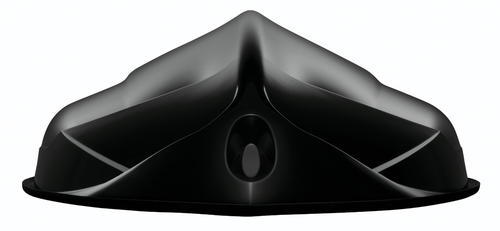
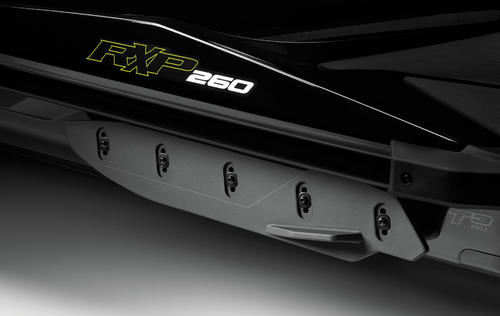
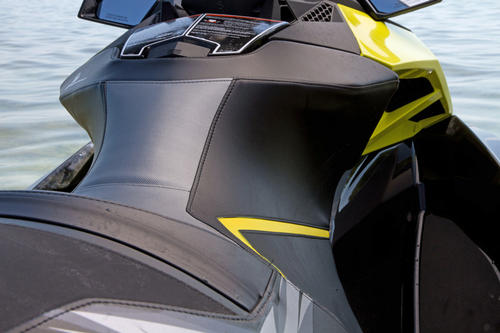
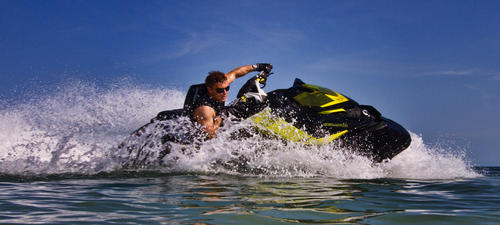








 Your Privacy Choices
Your Privacy Choices